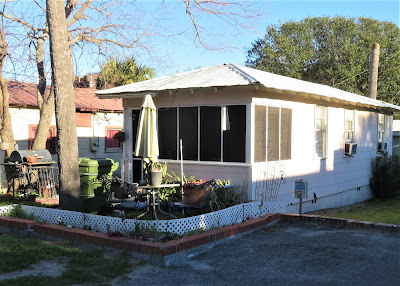My nephew who moved from New York to South Carolina after he graduated from college puts transplanted Northerners into their own category. They are not Southerners, he says. They are Northerners who now live in the South.
In other words, these transplants -- many of them retirees -- do not adapt to the customs and attitudes of the South. They bring their northern sensibilities with them, and often segregate themselves into gated communities or golf course developments -- or go to a university town like Athens or Austin.

When he took a job on Hilton Head Island, SC, my nephew lived off island where he could afford a place, with locals who were for the most part true Southerners. He commuted to Hilton Head where almost everyone came from the Northeast or upper Midwest.
Let's face it, there is a certain amount of snobbery among Northerners who retire to the South. Presumably the same could be said for Californians who retire to Arizona or Oregon. I don't think the Southerners or Westerners mind the snobbery so much. But many of them fear that the Northerners, or Californians, will bring their liberal values with them, which involve high taxes and big, intrusive government.
So why do northern, or bi-coastal, retirees migrate to Red states? Some go to be with family . . . their kids have moved for a job in Dallas or Denver, or Raleigh or Atlanta. But most retirees from the North move because they want warmer weather. And now that they don't have to live near their high-paying jobs in Boston or New York, or Chicago or Cleveland, they can move to a less stressful, more laid-back area of the country.
No doubt they also move for a lower cost of living. They may be tired of paying high state income taxes as well as $10,000 or $15,000 a year in real-estate taxes -- or maybe, now without a job, they simply can't afford the high cost of living. Maybe they say they want to support education, but since their kids are no longer in the school system, they don't have a personal stake in education and so they really don't want to pay for it.
Is this liberal hypocrisy? Well, maybe that's one way to look at it. But you really can't blame these people, can you?

So do Southerners really have to worry that northern liberals are going to bring their big city problems with them, or that they're going to "gentrify" the South, and the interior West as well, and run the locals out?
A recent poll found that 44% of people in New Jersey, and 50% in Connecticut, express an interest in leaving their state. The Berkeley Institute of Governmental Studies found that 52% of Californians are considering migrating to another state. According to the New York
Times, more than 7.3 million Californians have
actually left the state since 2007. That's as many people as the entire state of Arizona!
Is it possible that the Blue staters are bringing their politics with them? The people from California -- many but not all of whom are retirees -- are now fleeing to Nevada, Colorado and Arizona. The people from New Jersey and Connecticut are going to Florida and North Carolina. And these are exactly the Red states that are trending toward purple, if not blue, as their populations increase with out-of-staters.
But not so fast. The Berkeley poll also found a sharp difference between the people who want to leave their Blue states and those who want to stay. It's the conservatives and the moderates who are most unhappy and most anxious to leave. The liberals for the most part think their Blue state is just fine, and they are happy to stay where they are. So, for example, the breakdown for California is: 38% of Democrats are considering leaving, compared to 55% of independents and 71% of Republicans.
If this poll reflects reality, then maybe the question is wrong. Blue state liberals are not, by and large, retiring to Red states. Blue state
conservatives are retiring to Red states. If that's the case, then instead of making Red states more liberal, the migrants may actually widen the Red and Blue divide -- bolstering the conservative-to-moderate populations of the Red states while leaving the liberals behind to make the Blue states even more liberal.
Perhaps we all have some personal experience with this phenomenon. Certainly, several of my old New York friends are liberal elites who wouldn't dream of moving to states that they consider backward (cue
Deliverance.) I also know a few who have moved to Red states who complain vociferously about the "right wing" government and their "right wing" policies.
I also know people who have retired to Georgia and Florida and Texas who are perfectly happy with their new adopted states, and now wouldn't consider living anywhere else. But when I think about it . . . I believe they all live in a gated community, a golf course development, or a university town like Athens or Austin.




































